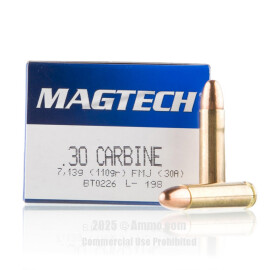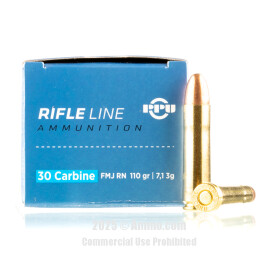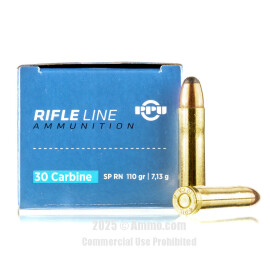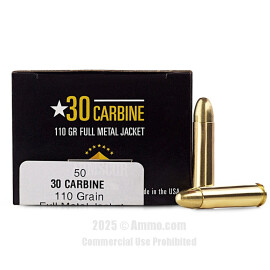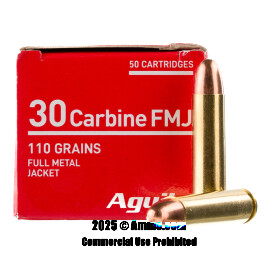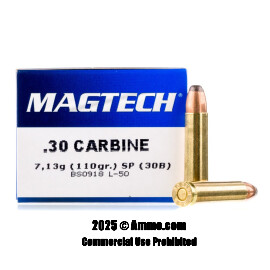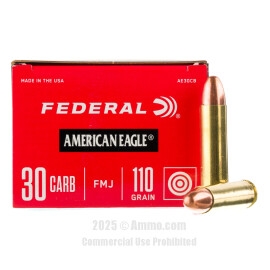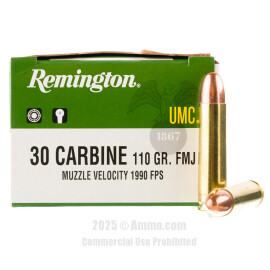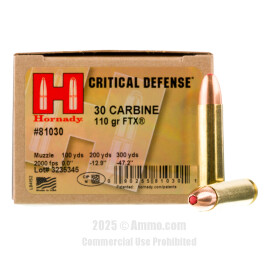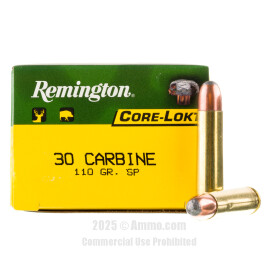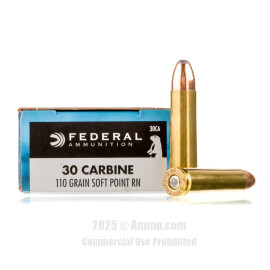
30 Carbine Ammo For Sale
Overview of 30 Carbine Ammo
Developed out of necessity for U.S. soliders in the 1940s, the .30 Carbine, also known as, .30 M1 Carbine, .30 SL ("SL" stands for self loading), .762x33mm, .30 Cal ammo, .30 Cal Carbine ammo, M1 ammo, and .30 ammo, was used by several Armies over the decades.
However, it didn't gain as much popularity among civilians, though some still use it for hunting and target shooting.
How Does The 30 Carbine Compare To Other Calibers?
| Caliber | Recoil | Pros | Cons |
|---|---|---|---|
| .223 Remington | Not a noticeable difference | 30 Carbine wins close-range effectiveness | 30 Carbine has less long-range effectiveness |
| 5.56 NATO | Not a noticeable difference | 30 Carbine wins close-range effectiveness | 30 Carbine has less long-range effectiveness |
Customer Reviews
-
BILLYTHEKID said:
like all the ammo
-
Mike said:
Great value. Great performance.
-
Bob R said:
Bought a box of this to use as economical practice ammo. Shot all 50 rounds without any problems, in an old 15 round and a new 30 round magazine. My early Universal Carbine seems to love it. Althought I can't quantify it, it does appear to be a little dirty compared to the Remington I have used, but that is what a cleaning kit is for. Will save the more expensive ammo for personal defense, but will buy more of the TulAmmo for target practice!
-
Frank said:
I have owned my M-1 Carbine since the early 90's, fired it many, many times & I have NEVER had any feeding issues, reloading issues or jams. I bought this ARMSCOR 30 Carbine.The quality seemed good, the price was great but, shooting a Ten round magazine I would have upwards of Three to Four jams, almost every time. The final solution was to lube the heck out of the bore & a little on the tips of the rounds themselves; then the amount of jams decreased to One or Two jams per TWO Ten round clips. All in all I am very pleased with the quality & the price. I recommend this product for its value alone.
-
Dennis the Memnace said:
It works.
-
Randy said:
Great value for hard to find ammo…performance is as expected from this product . I am pleased and if I need more I will go through this company….thanks
-
mosby said:
use in my ruger blackhawk .30 carbine revolver. it's accurate and reliable. i'd definitely buy it again!
-
PaPa G said:
Great ammo, good price hard to find but worth the search. Will but more soon as possible
-
Flood said:
Good ammo, good price, lightning shipping
